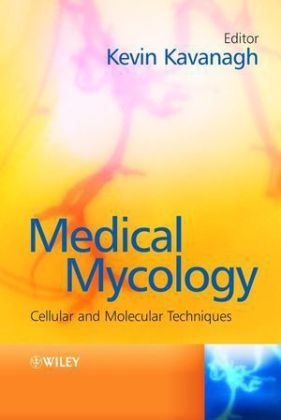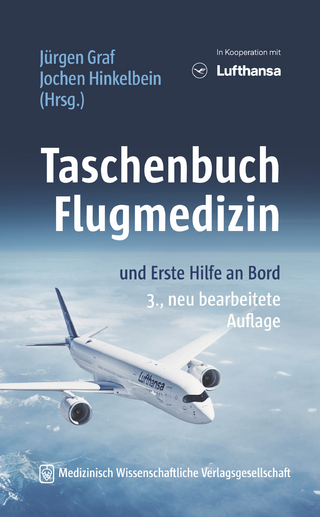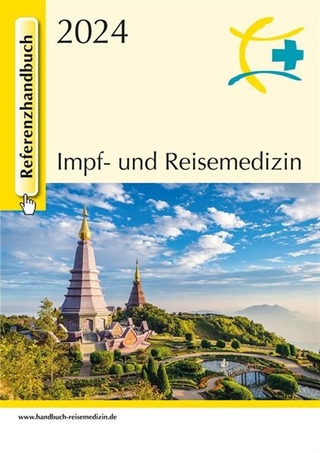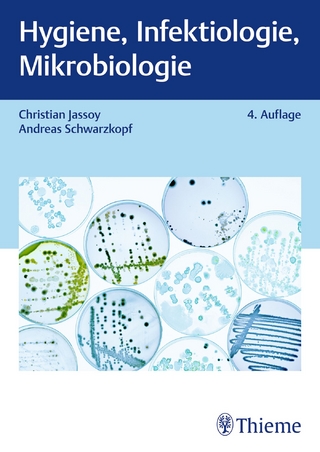
Medical Mycology
John Wiley & Sons Inc (Verlag)
978-0-470-01923-8 (ISBN)
Medical Mycology: Cellular and Molecular techniques is a clear and concise overview of the subject that details the techniques essential for ongoing research in the area. Drawing together contributions from both scientists and clinicians working in the field, the text will provide a valuable perspective on the applicability of specific techniques to patient care. A wide range of molecular, immunological and cytological techniques are discussed throughout, with the inclusion of protocol section in each chapter designed to provide both a background a up-to-date account of the applications of each procedure. Every technique is fully referenced and illustrations are provided where required to enhance student understanding.
comprehensive introduction to the key techniques critical to the study of medical mycology
clear explanation of how each technique is applied in the lab
contributions from internationally recognised experts in the field
outlines the background to many techniques required for the successful completion of a research project
An invaluable reference for students of microbiology, biochemistry and molecular biology as well as postgraduates and researchers in the field of medical mycology looking for an up-to-date overview of the latest laboratory techniques.
Editor: Dr Kevin Kavanagh, Department of Biology, National University of Ireland, Maynooth, Co. Kildare, Ireland
Preface xiii
List of Contributors xv
1 Diagnosis of Candida Infection in Tissue by Immunohistochemistry 1
Malcolm D. Richardson, Riina Rautemaa and Jarkko Hietanen
1.1 Introduction 1
1.2 Specificity of monoclonal antibody 3H8 for C. albicans 3
Protocol 1.1 Testing of specificity of monoclonal antibody 3H8 4
1.3 Evaluation of monoclonal antibody 3H8 for the detection of C. albicans morphological forms 6
Protocol 1.2 Evaluation of monoclonal antibody 3H8 for the detection of C. albicans morphological forms 6
1.4 Application of immunohistochemistry in the diagnosis of Candida periodontal disease 7
Protocol 1.3 Use of monoclonal antibody 3H8 in the detection of C. albicans in tissue 8
1.5 References 11
2 Transmission Electron Microscopy of Pathogenic Fungi 13
Guy Tronchin and Jean-Philippe Bouchara
2.1 Introduction 13
2.2 Glutaraldehyde-potassium-permanganate or glutaraldehyde-osmiumtetroxide fixation for ultrastructural analysis 16
Protocol 2.1 Glutaraldehyde-osmium tetroxide (#) or glutaraldehyde-potassium permanganate (*) fixation for ultrastructural analysis 17
2.3 Identification of the different compartments of the secretory pathway in yeasts 18
Protocol 2.2 Identification of the different compartments of the secretory pathway in yeasts 19
2.4 Cytochemical localization of acid phosphatase in yeasts 20
Protocol 2.3 Cytochemical localization of acid phosphatase in yeasts 21
2.5 Detection of anionic sites 23
Protocol 2.4 Detection of anionic sites 23
2.6 Detection of glycoconjugates by the periodic acid-thiocarbohydrazide-silver proteinate technique (PATAg) 25
Protocol 2.5 Detection of glycoconjugates by the periodic acid-thiocarbohydrazide-silver proteinate technique (PATAg) 26
2.7 Enzyme-gold approach for the detection of polysaccharides in the cell wall 28
Protocol 2.6 Enzyme-gold approach for the detection of polysaccharides in the cell wall 29
2.8 Detection of glycoconjugates by the lectin-gold technique 30
Protocol 2.7 Detection of glycoconjugates by the lectin-gold technique 31
2.9 Immunogold detection of antigens on ultrathin sections of acrylic resin 33
Protocol 2.8 Immunogold detection of antigens on ultrathin sections of acrylic resin 34
2.10 Cryofixation and freeze substitution for ultrastructural analysis and immunodetection 36
Protocol 2.9 Cryofixation and freeze substitution for ultrastructural analysis and immunodetection 37
2.11 Overview 38
2.12 References 39
3 Evaluation of Molecular Responses and Antifungal Activity of Phagocytes to Opportunistic Fungi 43
Maria Simitsopoulou and Emmanuel Roilides
3.1 Introduction 43
3.2 Preparation of conidia and hyphae of opportunistic fungi 45
Protocol 3.1 Preparation of conidia and hyphae of opportunistic fungi 45
Protocol 3.2 Preparation of hyphal fragments 47
3.3 Isolation of human monocytes from whole blood 48
Protocol 3.3 Isolation of human MNCs from whole blood 48
3.4 Analysis of human MNC function in response to fungal infection 51
Protocol 3.4 XTT microassay 52
Protocol 3.5 Superoxide anion assay in 96-well plate 53
Protocol 3.6 Hydrogen peroxide-rhodamine assay 55
Protocol 3.7 Phagocytosis assay 55
3.5 Evaluation of immunomodulators in response to fungal infection 57
Protocol 3.8 Analysis of gene expression by RT-PCR 58
Protocol 3.9 Analysis of pathway-specific gene expression by microarray technology 63
Protocol 3.10 Assessment of cytokines and chemokines by ELISA 66
3.6 Overview 67
3.7 References 68
4 Determination of the Virulence Factors of Candida Albicans and Related Yeast Species 69
Khaled H. Abu-Elteen and Mawieh Hamad
4.1 Introduction 69
4.2 Measurement of Candida species adhesion in vitro 70
Protocol 4.1 The visual assessment of candidal adhesion to BECs 70
Protocol 4.2 The radiometric measurement of candidal adhesion 73
4.3 Adhesion to inanimate surfaces 75
Protocol 4.3 Assessment of candidal adhesion to denture acrylic material 75
Protocol 4.4 Adherence of Candida to plastic catheter surfaces 76
4.4 C. albicans strain differentiation 77
Protocol 4.5 Resistogram typing 77
Protocol 4.6 The slide agglutination technique 79
Protocol 4.7 Serotyping of C. albicans by flow cytomerty 80
4.5 Phenotypic switching in C. albicans 81
Protocol 4.8 Evaluation of phenotype switching in C. albicans 82
4.6 Extracellular enzymes secreted by C. albicans 83
Protocol 4.9 Measurement of extracellular proteinase production by C. albicans 85
Protocol 4.10 Measurement of extracellular proteinase produced by C. albicans (staib method) 86
Protocol 4.11 Measurement of extracellular phospholipases of C. albicans 87
4.7 Germ-tube formation in C. albicans 88
Protocol 4.12 Germ-tube formation assay 88
4.8 References 89
5 Analysis of Drug Resistance in Pathogenic Fungi 93
Gary P. Moran, Emmanuelle Pinjon, David C. Coleman and Derek J. Sullivan
5.1 Introduction 93
5.2 Method for the determination of minimum inhibitory concentrations (MICs) of antifungal agents for yeasts 96
Protocol 5.1 Method for the determination of minimum inhibitory concentrations (MICs) of antifungal agents for yeasts 97
5.3 Measurement of Rhodamine 6G uptake and glucose-induced efflux by ABC transporters 102
Protocol 5.2 Measurement of rhodamine 6G uptake and glucose-induced efflux 102
5.4 Analysis of expression of multidrug transporters in pathogenic fungi 105
5.5 Analysis of point mutations in genes encoding cytochrome P- 450 lanosterol demethylase 106
5.6 Qualitative detection of alterations in membrane sterol contents 108
Protocol 5.3 Qualitative detection of alterations in membrane sterol contents 109
5.7 Overview 110
5.8 References 110
6 Animal Models for Evaluation of Antifungal Efficacy Against Filamentous Fungi 115
Eric Dannaoui
6.1 Introduction 115
6.2 Disseminated zygomycosis in non-immunosuppressed mice 118
Protocol 6.1 Disseminated zygomycosis in non-immunosuppressed mice 118
6.3 Animal model of disseminated aspergillosis 125
Protocol 6.2 Disseminated aspergillosis in neutropoenic mice 126
6.4 Study design for evaluation of antifungal combinations therapy in animal models 130
Protocol 6.3 Study design for the evaluation of combination therapy in animal models 131
6.5 References 133
7 Proteomic Analysis of Pathogenic Fungi 137
Alan Murphy
7.1 Introduction 137
Protocol 7.1 2D SDS-PAGE of protein samples 139
7.2 Protein digestion in preparation for mass spectrometry by MALDI-TOF 140
Protocol 7.2 Peptide mass fingerprinting (PMF) by MALDI-TOF mass spectrometry 141
Protocol 7.2a In-gel digestion 142
Protocol 7.2b In-solution digestion 143
7.3 MALDI-TOF mass spectrometry 145
Protocol 7.3 Preparation of matrix for MALDI-TOF 147
7.4 Peptide mass fingerprinting (PMF) 149
Protocol 7.4 Post-source decay (PSD) and chemically assisted fragmentation (CAF) 150
7.5 Interpreting MALDI-TOF result spectra 152
7.6 Overview 156
7.7 References 157
8 Extraction and Detection of DNA and RNA from Yeast 159
Patrick Geraghty and Kevin Kavanagh
8.1 Introduction 159
8.2 The extraction of yeast DNA with the aid of phenol: chloroform 161
Protocol 8.1 Whole-cell DNA extraction from C. albicans using phenol: chloroform 161
Protocol 8.2 Rapid extraction of DNA from C. albicans colonies for PCR 164
8.3 Detection of yeast DNA using radio-labelled probes 165
Protocol 8.3 DNA detection by Southern blotting 165
8.4 Extraction of whole-cell RNA using two different protocols 169
Protocol 8.4 The extraction of whole-cell RNA from yeast using phenol: chloroform 170
Protocol 8.5 Rapid extraction of whole-yeast-cell RNA 172
8.5 Detection and expression levels of specific genes by the examination of mRNA in yeast 174
Protocol 8.6 Examining mRNA content as a means of investigating gene-expression profile by northern blot analysis 175
Protocol 8.7 Examining mRNA content as a means of investigating gene-expression profile by RT-PCR analysis 176
8.6 References 179
9 Microarrays for Studying Pathogenicity in Candida Albicans 181
André Nantel, Tracey Rigby, Hervé Hogues and Malcolm Whiteway
9.1 Introduction 181
9.2 DNA microarrays 182
9.3 Building a second-generation 2-colour long oligonucleotide microarray for C. albicans 183
Protocol 9.1 Isolation of C. albicans RNA 185
Protocol 9.2 Isolation of total RNA using the hot phenol method 186
Protocol 9.3 Isolation of Poly-A+ mRNA 187
Protocol 9.4 Determination of the efficiency of incorporation of the probe 192
Protocol 9.5 Hybridization to DNA microarrays 194
9.4 Experiment design 196
9.5 Microarray-based studies in C. albicans 200
9.6 Conclusion 205
9.7 References 205
10 Molecular Techniques for Application with Aspergillus Fumigatus 211
Nir Osherov and Jacob Romano
10.1 Introduction 211
10.2 Preparation of knockout vectors for gene disruption and deletion in A. fumigatus 212
Protocol 10.1 Preparation of knockout vectors for gene disruption and deletion in A. fumigatus 213
10.3 Transformation of A. fumigatus 217
Protocol 10.2 Chemical transformation of A. fumigatus 218
10.4 Molecular verification of correct single integration (PCR-based) 220
Protocol 10.3 Molecular verification of correct integration by PCR 221
10.5 General strategies for the phenotypic characterization of A. fumigatus mutant strains 223
Protocol 10.4 General strategies for the phenotypic characterization of mutants 223
10.6 References 229
11 Promoter Analysis and Generation of Knock-out Mutants in Aspergillus Fumigatus 231
Matthias Brock, Alexander Gehrke, Venelina Sugareva and Axel A. Brakhage
11.1 Introduction 231
11.2 Site-directed mutagenesis of promoter elements 233
Protocol 11.1 Site-directed mutation of promoter elements 233
11.3 lacZ as a reporter gene 236
Protocol 11.2 lacZ as a reporter gene: discontinuous determination of b-galactosidase activity 237
Protocol 11.3 lacZ as a reporter gene: continuous determination of b-galactosidase activity 239
11.4 Transformation of A. fumigatus 241
Protocol 11.4 Transformation of A. fumigatus 242
11.5 Hygromycin B as a selection marker for transformation 246
Protocol 11.5 Hygromycin B as a selection marker for transformation 247
11.6 pyrG as a selection marker for transformation 249
Protocol 11.6 pyrG as a selection marker for transformation 249
11.7 URA-blaster (A. niger pyrG) as a reusable selection marker system for gene deletions/disruptions 251
Protocol 11.7 URA-blaster (A. niger pyrG) as a reusable selection marker system for gene deletions/disruptions 253
11.8 References 255
12 Microarray Technology for Studying the Virulence of Aspergillus Fumigatus 257
Darius Armstrong-James and Thomas Rogers
12.1 Introduction 257
12.2 Isolation of RNA from A. fumigatus 259
Protocol 12.1 Isolation of total RNA from A. fumigatus 260
12.3 Reverse transcription of RNA and fluorescent labelling of cDNA 263
Protocol 12.2 Indirect labelling of cDNA with fluorescent dyes 264
12.4 Hybridization of fluorescent probes to DNA microarrays and post-hybridization washing 266
Protocol 12.3 Hybridization of fluorescent probes to DNA microarrays and post-hybridization washing 267
12.5 Image acquisition from hybridized microarrays 269
Protocol 12.4 Image acquisition from hybridized microarrays 269
12.6 Microarray image analysis 270
Protocol 12.5 Microarray image analysis 271
12.7 References 272
13 Techniques and Strategies for Studying Virulence Factors in Cryptococcus Neoformans 275
Nancy Lee and Guilhem Janbon
13.1 Introduction 275
13.2 Construction of C. neoformans gene-disruption cassettes 278
Protocol 13.1 Construction of C. neoformans gene-disruption cassettes 278
13.3 Genetic transformation of C. neoformans 283
Protocol 13.2 Biolistic transformation of C. neoformans 283
Protocol 13.3 Transformation via electroporation 286
13.4 Extraction of genomic DNA from C. neoformans 287
Protocol 13.4 DNA for use in library construction and hybridization analysis 288
Protocol 13.5 DNA for use in PCR 291
13.5 Screening and identification of deletion strains 292
Protocol 13.6 Screening and identification of deletion strains 292
13.6 Measuring capsule size in C. neoformans 297
Protocol 13.7 Measuring capsule size in C. neoformans 298
13.7 Purification of glucuronoxylomannan (GXM) 298
Protocol 13.8 Purification of glucuronoxylomannan (GXM) 299
13.8 References 301
14 Genetic Manipulation of Zygomycetes 305
Ashraf S. Ibrahim and Christopher D. Skory
14.1 Introduction 305
14.2 Genetic tools to manipulate mucorales 306
14.3 Selectable markers used with mucorales fungi 307
14.4 Introduction of DNA used for transformation 308
Protocol 14.1 Protoplasting of R. oryzae 309
Protocol 14.2 Biolistic delivery system transformation of R. oryzae 313
Protocol 14.3 A. tumefaciens-mediated transformation 316
14.5 Molecular analysis of transformants 319
14.6 Overview 322
14.7 References 323
Index 327
| Erscheint lt. Verlag | 15.12.2006 |
|---|---|
| Verlagsort | New York |
| Sprache | englisch |
| Maße | 174 x 252 mm |
| Gewicht | 794 g |
| Einbandart | gebunden |
| Themenwelt | Medizin / Pharmazie ► Medizinische Fachgebiete ► Mikrobiologie / Infektologie / Reisemedizin |
| Naturwissenschaften ► Biologie ► Mikrobiologie / Immunologie | |
| ISBN-10 | 0-470-01923-9 / 0470019239 |
| ISBN-13 | 978-0-470-01923-8 / 9780470019238 |
| Zustand | Neuware |
| Haben Sie eine Frage zum Produkt? |
aus dem Bereich


